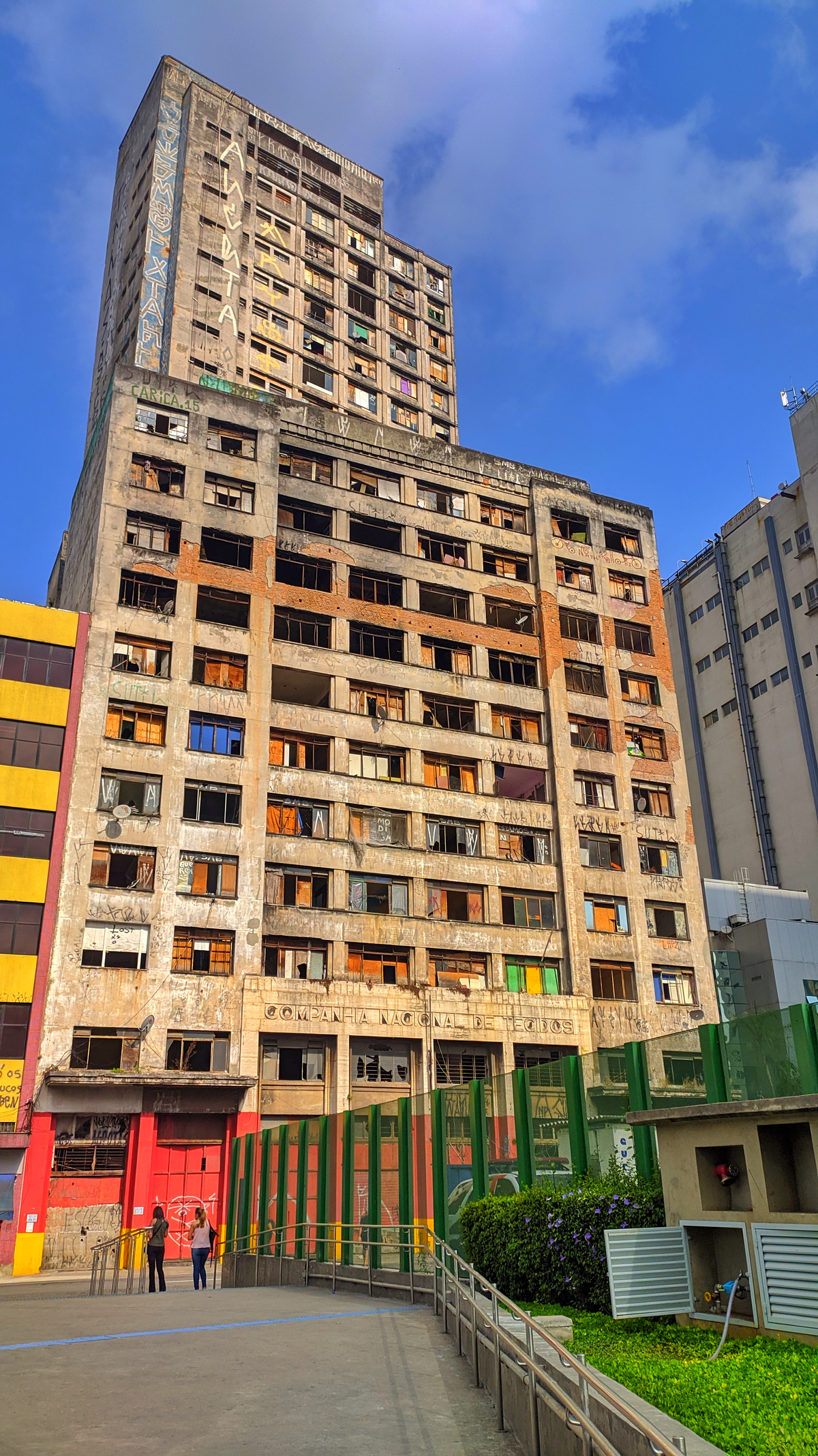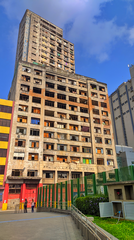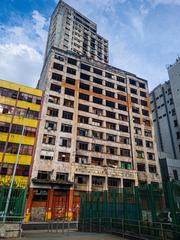
Prestes Maia Building: Visiting Hours, Tickets, and Essential Guide to São Paulo’s Historic Landmark
Date: 14/06/2025
Introduction
The Prestes Maia Building, located in the heart of downtown São Paulo, is a striking symbol of the city’s industrial heritage and ongoing social struggles. Originally built in 1957 as a textile factory, it later became Brazil’s largest vertical occupation and a focal point in the fight for housing rights. Today, as it undergoes a major retrofit to become social housing, Prestes Maia stands as a monument to urban resilience and transformation. This guide provides a detailed overview of its history, cultural significance, practical visitor information, and how the building fits into São Paulo’s landscape of historic sites.
Table of Contents
- Introduction
- Historical Overview
- Architectural and Cultural Impact
- Visiting the Prestes Maia Building
- Nearby Attractions
- Photography and Urban Exploration
- FAQs
- Conclusion
- References
Historical Overview
Early Origins and Construction
The Prestes Maia Building, at 911 Avenida Prestes Maia, was constructed in 1957 for the Companhia Nacional de Tecidos, reflecting São Paulo’s rapid industrialization and urban expansion in the mid-20th century (Britannica). Its strategic location near the Luz train station made it a key manufacturing and transport hub within the city’s booming textile industry.
Naming and Urban Legacy
Named after Francisco Prestes Maia, a renowned urban planner and former mayor, the building and its avenue represent a pivotal era in São Paulo’s modernization. Prestes Maia’s influential “Plano de Avenidas” master plan reshaped the city’s road network, facilitating growth and symbolizing São Paulo’s ambitions (Wikipedia; anpur.org.br).
Decline and Abandonment
By the 1980s and 1990s, as the city’s textile industry declined and urban economies shifted, the building was vacated and left to deteriorate. It stood empty for years, reflecting a broader trend of downtown deindustrialization and neglect (Metropoles).
Occupation and Social Significance
In 2002, the abandoned building became the largest vertical squat in Brazil when over 400 families—organized by housing movements such as MTST and FLM—occupied its 22 stories (Al Jazeera; IWMF). Residents established a self-organized community, installing utilities and creating communal spaces, and the building became a powerful symbol of urban resistance against housing inequality and exclusion.
Architectural and Cultural Impact
The Prestes Maia Building stands as a notable example of mid-century functionalist architecture, with its concrete frame, repetitive window bays, and imposing scale. While not an architectural landmark in the traditional sense, its adaptive reuse—from industrial factory to occupied residence and now social housing—exemplifies São Paulo’s evolving urban dynamics (ArchDaily). The building’s occupation also spurred artistic collaborations, cultural workshops, and community development initiatives, reinforcing its status as a “human volcano” of urban energy (professores.uff.br).
Visiting the Prestes Maia Building
Visiting Hours and Tickets
Current Status:
As of June 2025, the Prestes Maia Building is undergoing a retrofit to become formal social housing. Public interior access is not permitted, and there are no official visiting hours or ticket sales. The building is not a conventional tourist attraction. Visitors are welcome to view and photograph its exterior from Avenida Prestes Maia.
Special Events and Tours:
Occasionally, local community organizations or activist groups may offer guided tours or cultural events related to the building’s legacy. For the latest information, check São Paulo’s official cultural websites or contact local housing rights organizations directly.
Accessibility
Due to current renovations and residential status, the building itself is not accessible to the public or to those with mobility challenges. However, nearby attractions such as Luz Station and the São Paulo Museum of Art are accessible and equipped for visitors with different needs.
Travel Tips
- Getting There: The building is centrally located and easily reached by metro—Luz Station (Lines 1, 4, and CPTM) is the nearest stop.
- Safety: The area is generally safe by day, especially near cultural sites and transit hubs. Use standard urban precautions and avoid less busy streets after dark.
- Respect Residents: The building is home to families and community members; always respect their privacy and avoid intrusive photography or attempts to enter.
Nearby Attractions
Enhance your visit to Prestes Maia by exploring these nearby São Paulo landmarks:
- Pinacoteca do Estado: São Paulo’s oldest and most prestigious art museum.
- Estação da Luz: A historic train station and cultural venue.
- Sala São Paulo: A world-renowned concert hall.
- Theatro Municipal: An architectural masterpiece and center for performing arts.
- Mercado Municipal: A bustling market for local cuisine and culture.
- Sé Cathedral: The city’s iconic neo-Gothic cathedral.
- Vila Madalena: A neighborhood famous for street art, galleries, and cafes (SaopauloSecreto).
Photography and Urban Exploration
The building’s imposing façade and its setting amid São Paulo’s historic core offer excellent photo opportunities. The best vantage points are along Avenida Prestes Maia and surrounding streets during daylight. Respect the residents’ privacy and adhere to local guidelines when taking photos.
Frequently Asked Questions (FAQ)
Q: Can I visit or tour the Prestes Maia Building’s interior?
A: No, interior access is restricted due to ongoing renovations and resident privacy.
Q: Are there official visiting hours or tickets?
A: There are no official hours or tickets. The building is not open to the public but can be viewed from the street.
Q: How do I get to the building?
A: Use public transportation to Luz Station and walk a short distance to Avenida Prestes Maia, 911.
Q: Are there guided tours?
A: Occasionally, local organizations may offer guided tours focused on urban history and social movements. Check with local cultural groups for updates.
Q: Is the area safe for visitors?
A: The area is busy and generally safe during the day. Exercise standard urban caution, especially after dark.
Conclusion
The Prestes Maia Building is a living monument to São Paulo’s industrial heritage, urban struggles, and grassroots activism. While it is not accessible for interior visits, its story—of abandonment, occupation, and ongoing transformation—offers powerful insights into the challenges and possibilities of urban renewal and social justice. Visitors are encouraged to respectfully explore its surroundings, engage with the city’s broader historical and cultural landscape, and deepen their understanding of São Paulo’s dynamic urban identity.
For the latest updates on access, cultural events, and guided tours, follow official São Paulo tourism platforms and download the Audiala app. Combine your visit to Prestes Maia with nearby historic sites for a richer, more contextualized experience in Brazil’s largest city.
References
- Britannica - São Paulo: The City After Independence
- Francisco Prestes Maia - Wikipedia
- Occupy to Survive: Brazilian Squatters Fight for Housing Rights - Al Jazeera
- Art and Collectives in São Paulo - professores.uff.br
- Urban Planning Legacy of Prestes Maia - anpur.org.br
- Reporting on Housing Crisis in São Paulo - IWMF
- Prestes Maia Retrofit and Social Housing - Metropoles
- Urban Center Retrofitting Case Study - ArchDaily
- São Paulo Housing and Redevelopment News - Capital SP
- Tourist Attractions in São Paulo - SaopauloSecreto





































































































































































